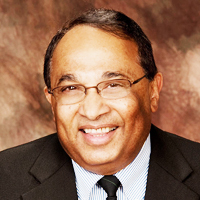Low Level Light Therapy (LLLT): Penetration and Photobiomodulation
Published on: 31st July, 2017
OCLC Number/Unique Identifier: 7286425855
Mester et al., stated the laser effects in a review of their studies of 15 various biological systems, they observed the stimulating effect of low energy (in terms of J/cm2) laser and inhibiting effect of high energy laser and later reported the relationship of cumulative energy applied and the effects conforms to the Arndt-Schultz law. They concluded their experience with 875 healed cases and the results of their experiments had convinced them to recommend the use of lasers to stimulate wound healing [1].
Synergistic Approach: Photobiomodulation, Neuromodulation, and Drug Therapy in Neuropsychiatry. A Promising Strategy to Enhance PBM Adoption and Neurotherapy Efficacy
Published on: 18th August, 2023
Photobiomodulation (PBM) is an effective method for treating neuropsychiatric diseases, yet its universal acceptance and utilization remain constrained. In this Letter to the Editor/Expert Opinion, we address the challenges confronting PBM researchers and pioneers, striving to establish universal confidence in its exclusive application for neuropsychiatric patient care. Despite encouraging animal experiments and selecting positive human clinical trial outcomes, PBM’s widespread acceptance of PBM is hindered by factors including limited clinical studies and clashes with established therapies, such as drug therapy and psychotherapy.To overcome these obstacles and broaden PBM’s adoption and application of PBM in neuropsychiatry, we propose a combinatorial therapy approach. By integrating PBM with interventions such as Cognitive Behavioral Therapy (CBT) or drug therapy, a cumulative effect can be attained, benefiting both patients and therapists. Patients gain access to diverse treatment options and experience synergistic effects of combined therapies, thereby enhancing outcomes. Therapists benefit from expanded intervention choices and improved quality of patient care.This study introduces a novel strategy of amalgamating PBM with recognized interventions, such as CBT and drug therapy, to address existing challenges. This combined approach offers a practical solution to augment PBM acceptance and usage in the realm of neuropsychiatry.To endorse this strategy, a shift in the research direction is imperative. Future studies should investigate the amalgamated use of PBM with other neurointerventions, such as CBT or drug therapy. Robust clinical trials contrasting groups like “PBM + CBT” and “PBM (sham) + rTMS” are vital to persuade clinicians and patients toward embracing combined PBM therapies.Although PBM’s eventual autonomy as a neuropsychiatric treatment is an overarching goal, the present combination therapy approach proves practical, inevitable, and mutually beneficial. By bridging conventional therapies with PBM, this strategy may facilitate wider acceptance and utilization in neuropsychiatry.
Enhancing Physiotherapy Outcomes with Photobiomodulation: A Comprehensive Review
Published on: 23rd July, 2024
Physiotherapy treatments employ complex approaches tailored to the patient’s diagnosis. Exercise is the primary strategy to enhance rehabilitation processes for most individuals. However, electrophysical agents, such as Photobiomodulation (PBM), that utilize specific wavelengths of light to penetrate tissues and stimulate cellular activity, can modulate various biological processes and may improve physiotherapy outcomes. This non-invasive treatment can reduce pain and inflammation, promote tissue repair, and accelerate tissue healing. Currently, PBM has numerous applications, including pain and inflammation treatment, wound healing (such as diabetic foot ulcers, pressure ulcers, post-surgery wounds, and skin grafts in burn injuries), and the management of musculoskeletal disorders (such as arthritis, tendinopathies, muscle injuries, and spinal disorders). It is also utilized to improve muscle performance and recovery in rehabilitation and sports. Additionally, transcranial PBM has shown promise in enhancing neurorehabilitative processes by facilitating the recovery of cognitive and motor functions in various types of lesions. The safety and efficacy of this treatment allow it to be incorporated alongside regular exercises and manual therapies as an adjunctive treatment, potentially enhancing outcomes in different areas of rehabilitation.




